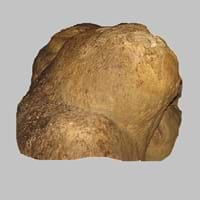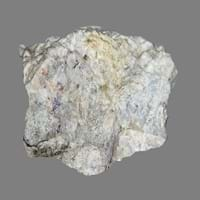Definition
Travertine is a mineral consisting of layered calcium carbonate formed by deposition from spring waters
Skarns are formed during regional or contact metamorphism and from a variety of metasomatic processes involving fluids of magmatic, metamorphic, and/or marine origin
Origin
Italy
USA, Australia
Discoverer
Marcus Vitruvius Pollio
Tornebohm
Etymology
From Italian travertino a kind of building stone, from Tiburs, adjective from Tibur (Tivoli), in Italy
From an old Swedish mining term originally used to describe a type of silicate gangue or waste rock.
Class
Sedimentary Rocks
Metamorphic Rocks
Sub-Class
Durable Rock, Medium Hardness Rock
Durable Rock, Hard Rock
Group
Not Applicable
Not Applicable
Other Categories
Fine Grained Rock, Opaque Rock
Fine Grained Rock, Opaque Rock
Texture
Banded
Earthy, Mud-rich, Rough
Color
Beige, Black, Blue, Brown, Grey, Red, White, Yellow
Black, Brown, Colourless, Green, Grey, White
Durability
Durable
Durable
Scratch Resistant
Yes
Yes
Interior Uses
Decorative Aggregates, Entryways, Flooring, Homes, Interior Decoration
Decorative Aggregates, Entryways, Interior Decoration
Exterior Uses
As Building Stone, As Facing Stone, Paving Stone, Garden Decoration, Office Buildings
As Building Stone, As Facing Stone, Garden Decoration, Paving Stone
Other Architectural Uses
Curbing
Curbing
Construction Industry
As Dimension Stone, Building houses or walls, Cement Manufacture, Construction Aggregate, for Road Aggregate, Raw material for the manufacture of mortar
As a Flux in the Production of Steel and Pig Iron, As a Sintering Agent in Steel Industry to process Iron Ore, As Dimension Stone, Gold and Silver production, Manufacture of Magnesium and Dolomite Refractories
Medical Industry
Not Yet Used
Not Applicable
Antiquity Uses
Artifacts, Jewellery, Monuments, Sculpture, Small Figurines
Artifacts, Monuments, Sculpture
Commercial Uses
Cemetery Markers, Creating Artwork, Gemstone, Jewelry, Paper Industry, Pottery
Creating Artwork, Gemstone, Jewelry, Metallurgical Flux, Source of Magnesia (MgO)
Types
Not Available
Endoskarns
Features
Stalactites and stalagmites are formed from this rock, Surfaces are often shiny, Very fine grained rock
Host Rock for Lead, Zinc and Copper Deposits
Archaeological Significance
Famous Monuments
Colosseum in Rome, Italy, Sacré Coeur in Paris, France, Trevi Fountain in Rome, Italy
Data Not Available
Famous Sculptures
Data Not Available
Data Not Available
Pictographs
Used
Not Used
Petroglyphs
Used
Not Used
Formation
Travertine is a type of sedimentary rock formed when a river carries or transports pieces of broken rock which then undergo sedimentation. They are then subjected to high temperature and pressure hence forming travertine rock.
Due to change in environmental conditions, rocks are heated and pressurized deep inside the Earth's surface. Skarn is formed from the extreme heat caused by magma or by the intense collisions and friction of tectonic plates.
Mineral Content
Calcite, Clay, Feldspar, Micas, Quartz
Calcite, Enstatite, Epidote, Garnet, Magnetite, Pyroxene, Titanite
Compound Content
Ca, NaCl, CaO, Oxygen
Au, CaO, Carbon Dioxide, Cu, Fe, MgO
Types of Metamorphism
Not Applicable
Burial Metamorphism, Cataclastic Metamorphism, Contact Metamorphism, Hydrothermal Metamorphism, Impact Metamorphism, Regional Metamorphism
Types of Weathering
Biological Weathering, Chemical Weathering, Mechanical Weathering
Not Applicable
Types of Erosion
Chemical Erosion, Coastal Erosion, Glacier Erosion
Not Applicable
Grain Size
Fine Grained
Fine Grained
Fracture
Splintery
Irregular
Streak
White
Light to dark brown
Porosity
Highly Porous
Less Porous
Luster
Dull to Pearly
Waxy and Dull
Compressive Strength
Not Available
Cleavage
Non-Existent
Slaty
Specific Gravity
1.68
2.86
Transparency
Opaque
Opaque
Density
2.71 g/cm3
2.8-2.9 g/cm3
Resistance
Impact Resistant, Pressure Resistant, Wear Resistant
Heat Resistant
Deposits in Eastern Continents
Asia
China, Russia
China, India, Russia, Saudi Arabia, South Korea, Sri Lanka
Africa
Not Yet Found
South Africa, Western Africa
Europe
Austria, Italy, Portugal, United Kingdom
United Kingdom
Others
Not Yet Found
Not Yet Found
Deposits in Western Continents
North America
Canada, USA
Canada
South America
Argentina, Bolivia, Ecuador
Brazil, Colombia, Paraguay
Deposits in Oceania Continent
Australia
Not Yet Found
Central Australia, Western Australia
All about Travertine and Skarn Properties
Know all about Travertine and Skarn properties here. All properties of rocks are important as they define the type of rock and its application. Travertine belongs to Sedimentary Rocks while Skarn belongs to Metamorphic Rocks.Texture of Travertine is Banded whereas that of Skarn is Earthy, Mud-rich, Rough. Travertine appears Fibrous and Skarn appears Dull. The luster of Travertine is dull to pearly while that of Skarn is waxy and dull. Travertine is available in beige, black, blue, brown, grey, red, white, yellow colors whereas Skarn is available in black, brown, colourless, green, grey, white colors. The commercial uses of Travertine are cemetery markers, creating artwork, gemstone, jewelry, paper industry, pottery and that of Skarn are creating artwork, gemstone, jewelry, metallurgical flux, source of magnesia (mgo).










